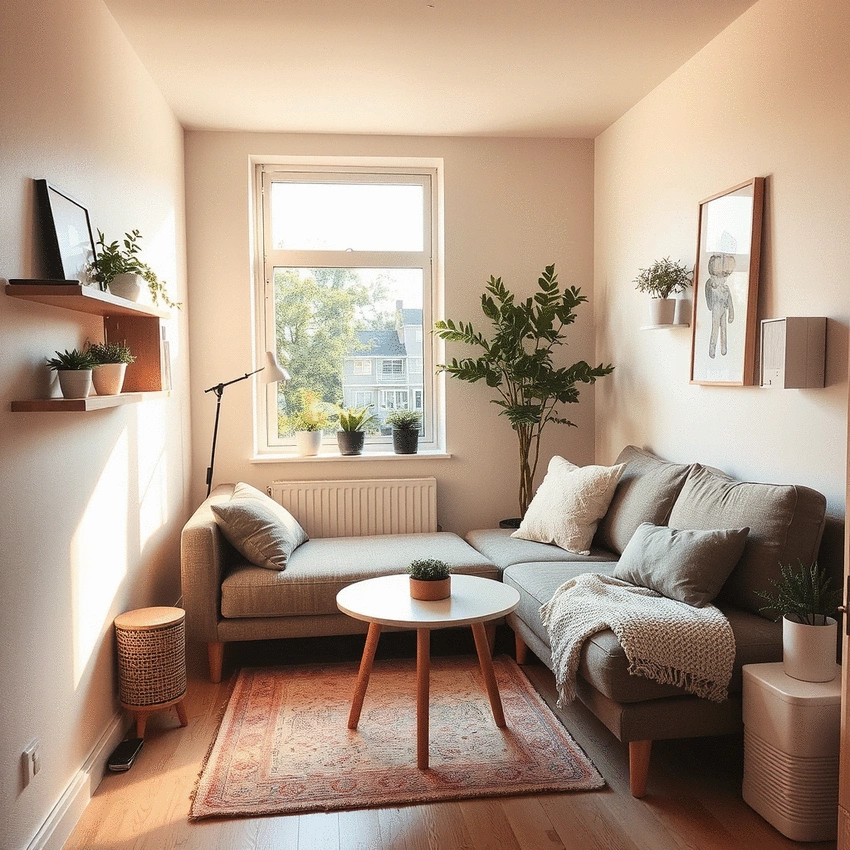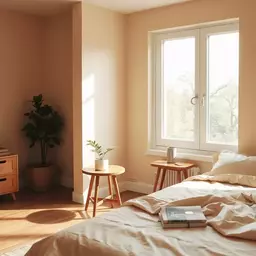Streamline Your Move Effectively
By Marina Hargrove / Nov 04
Every year, more individuals and families are choosing to embrace the simplicity of compact living. This shift is not just about downsizing; it's a profound journey of self-discovery and emotional growth. As you contemplate this lifestyle change, consider what truly brings you joy and how you can create a space that reflects your values.
Understanding the key benefits and challenges associated with compact living allows individuals to better prepare for the transition.
The move towards compact living has become a popular trend for many individuals and families. Whether it's for financial reasons, environmental concerns, or simply the desire for a simpler lifestyle, downsizing offers various benefits and challenges. At Downsizing Diaries, we believe that understanding both sides of this transition can help you prepare and embrace this change with enthusiasm and confidence! For more insights, explore our article on downsizing for a simpler retirement.
One major benefit of downsizing is the reduced financial burden. Smaller living spaces often mean lower mortgage or rent payments, decreased utility costs, and less money spent on upkeep. Additionally, living in a compact space encourages you to prioritize what truly matters, fostering a sense of freedom that can be incredibly refreshing. However, it's essential to recognize that this journey also comes with its unique set of challenges.
These challenges can sometimes feel overwhelming, but they also provide an opportunity for personal growth. Embracing the journey of downsizing invites you to reflect on your values and make intentional decisions about what to keep, discard, or donate. It opens the door to new experiences and relationships, leading to a fulfilling lifestyle that aligns with your goals.
As we embark on the journey of downsizing, it's crucial to acknowledge the emotional landscape that accompanies this transition. Many people find themselves grappling with feelings of nostalgia as they sort through items that have accumulated over the years. It’s no surprise that memories are often tied to our belongings—after all, each item tells a story! This can make letting go feel like a daunting task. For further reading on this topic, consider our guide to coping with downsizing emotions.
To navigate these emotions, consider asking yourself: What truly brings you joy? Reflect on what items hold significant meaning, and let that guide your decision-making process. Sharing stories with friends or family while sorting through belongings can also lighten the emotional load and make the process much more enjoyable.
By recognizing these emotional challenges, you can approach downsizing with a more open heart and mind. Remember, it’s not just about reducing clutter; it’s about creating a space that reflects who you are and what you value.
Place attachment refers to the emotional bond between individuals and their living environments. When downsizing, you may find yourself grappling with this attachment, especially if you've lived in one place for a long time. The memories created in that home can feel irreplaceable, making it challenging to let go.
To ease this transition, try to focus on the positive aspects of your new living situation. What opportunities does it offer? Will you be closer to family, friends, or nature? By shifting your perspective, you can cultivate excitement for the new chapter ahead.
As you embrace these changes, remember that it's normal to feel a mix of emotions. The journey of downsizing is as much about letting go as it is about welcoming new opportunities that enhance your quality of life.
Transitioning to a smaller living space requires psychological adaptation that can take time. Initially, you may feel cramped or anxious about losing space, but with time, many find that they enjoy the simplicity that comes with compact living. It’s essential to give yourself grace during this adjustment period!
One effective way to ease into this new lifestyle is to organize your space thoughtfully. Organizing not only makes a small area feel more functional; it also helps create that cozy, inviting atmosphere we all crave. Remember, a well-organized home can significantly enhance your mental well-being! For practical advice on decluttering, read our article on conquering clutter to ease your downsizing.
By focusing on creating a space that feels welcoming, you’ll find yourself adapting more comfortably to compact living. Over time, you may discover that less really is more, and those little bits of extra space can lead to greater emotional freedom.
Here's a brief recap of the key points discussed so far:
As we embark on the journey of downsizing, it's essential to foster a positive mindset regarding our new, smaller living spaces. At Downsizing Diaries, we understand that adapting to compact living can bring about emotional challenges. However, with the right mindset and practices, we can transform these challenges into opportunities for growth and joy!
One effective way to cope with the transition is through mindfulness practices. Incorporating mindfulness into our daily routines encourages us to stay present and appreciate the simplicity of our new surroundings. Whether it's enjoying a warm cup of tea in our cozy nook or taking a moment to breathe deeply in our favorite corner, these practices can help us embrace the joys of smaller living.
Here are some mindfulness techniques to help you navigate the emotional terrain of downsizing:
By embracing these techniques, you can cultivate a sense of peace and clarity in your compact home. Remember, it’s all about finding the beauty in what you have and the experiences you create!
While adjusting to a smaller living space, it’s important to prioritize our emotional well-being. Here are some practical tips to help you maintain a positive outlook:
By implementing these tips, you can create an environment that fosters calm and connection, making your smaller space truly feel like home!
Building a sense of identity in your new environment is crucial for embracing this lifestyle change. Here’s how you can cultivate this sense of place:
When we engage with our surroundings and community, it fosters a deeper connection with our living space, making downsizing feel rewarding and fulfilling.
Now that we’ve explored ways to cultivate a positive outlook, let’s discuss how to take actionable steps toward embracing a smaller lifestyle. Transitioning to compact living can feel daunting, but with the right resources and community support, it can be an exciting adventure! Explore our insights on emotional readiness in life changes to prepare for your journey.
At Downsizing Diaries, I encourage you to tap into the wealth of resources available, both locally and online. These connections can provide inspiration and motivation as you navigate your downsizing journey.
Here are some ways to engage with valuable resources and community support:
Engaging with these resources can enhance your experience, offering a sense of belonging and shared purpose as you simplify your life.
As we wrap up, let's reflect on the key takeaways for a successful transition to smaller living. Remember, embracing this change doesn’t mean losing out; it’s about gaining a new perspective on what truly matters. Focus on making your space feel like home while seeking joy in the simplicity of everyday life. For those considering apartment living, check out our tips for apartment living transition.
So, take a deep breath and celebrate every small victory along the way. Embrace the change with open arms and find happiness in the newfound freedom that comes with downsizing. You’ve got this—your journey to a joyful, simplified life is just beginning!
Here is a quick recap of the important points discussed in the article:

 Streamline Your Move Effectively
Moving can often feel like a chaotic whirlwind, but what if you could transform that chaos into clar
Streamline Your Move Effectively
Moving can often feel like a chaotic whirlwind, but what if you could transform that chaos into clar
 Conquering Clutter: Ease Your Downsizing
Did you know that the state of your living space can significantly impact your mental health? Clutte
Conquering Clutter: Ease Your Downsizing
Did you know that the state of your living space can significantly impact your mental health? Clutte
 Embrace a Simpler Lifestyle
As you embark on the journey of downsizing and embracing a simpler lifestyle, consider this: simplif
Embrace a Simpler Lifestyle
As you embark on the journey of downsizing and embracing a simpler lifestyle, consider this: simplif